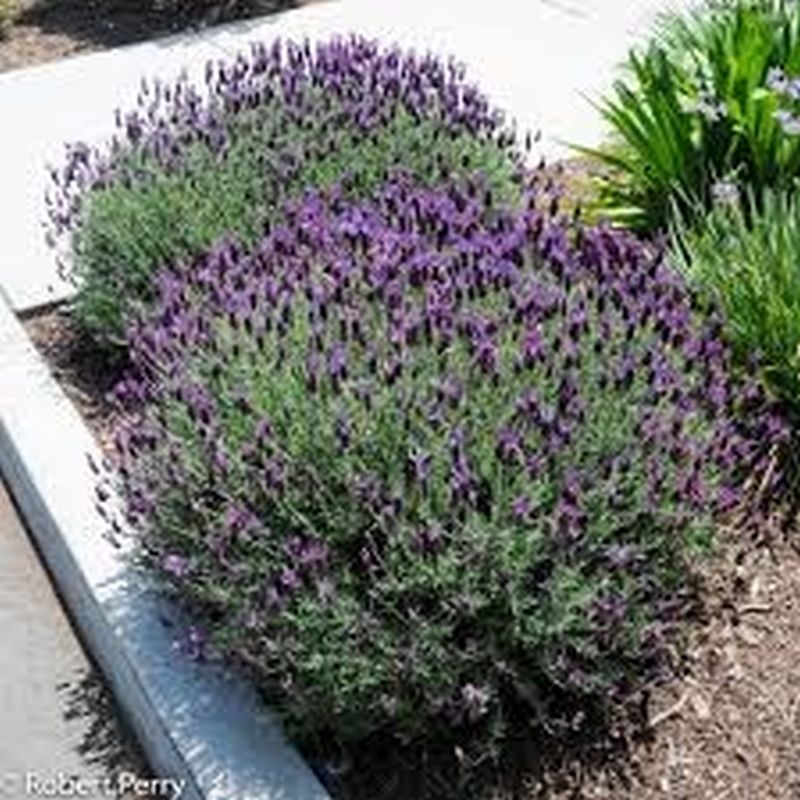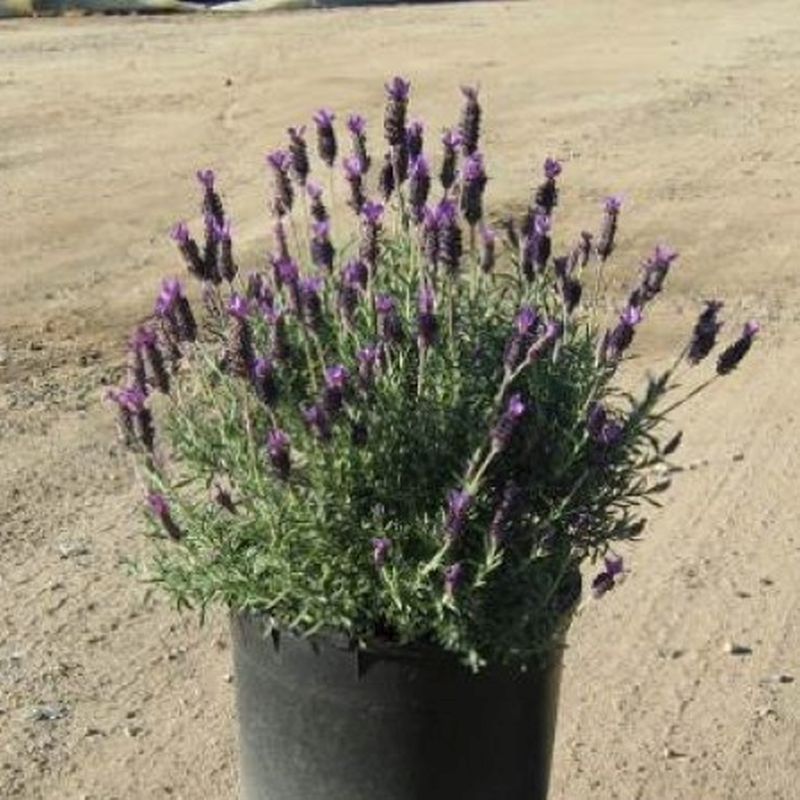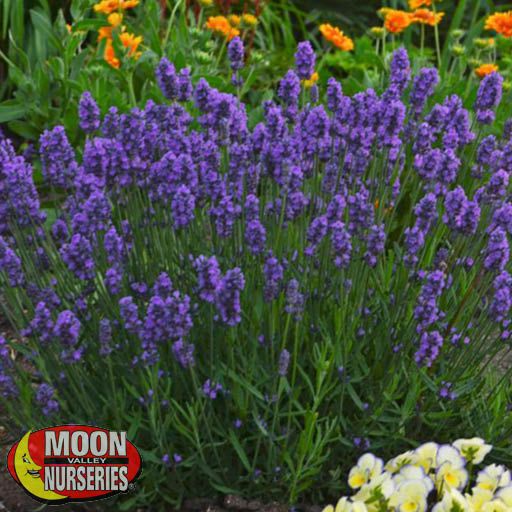
Lavenders are drought-tolerant plants that do well in hot and dry Mediterranean border nations like Italy, France, and Spain, thus they are suitable for hot weather.
Depending on the climate, amount of rainfall, humidity, and whether the lavenders are placed in pots, containers, raised beds, or garden borders, there are many ways to water lavender in hot weather in your garden.
As their roots like sandy soil that dries out between bouts of watering to keep healthy, lavenders are heat-tolerant, but there is always more risk from overwatering lavender than underwatering:
| Conditions | Lavender Watering in Hot Weather |
| Long-standing Lavender: | During warmer weather, water established lavender once every two weeks with a generous soak if there hasn’t been any rain. |
| Potted and other Container Lavender: | Every two weeks, water generously and soak. To prevent the soil from drying up too soon in hot weather, place the lavender in a pot that is 12 to 16 inches across. |
| Climates with a cool temperate (like the UK or Washington and Oregon): | Every two to three weeks, give yourself a good soak in water. |
| climates that are dry and hot, as those in Southern Europe or Southern California: | Every two weeks, water generously and soak. |
| humid environments/hot, humid weather | If it’s humid outside, avoid watering established outdoor lavender plants because doing so increases the danger of root rot. |
| Lavender recently planted: | After planting, water deeply and then once every three days for the first two weeks. For the first month, water once per week; if the heat continues, continue watering once per week. Once every two weeks when it becomes cooler. |
Learn exactly how to water lavender in hot weather in various situations and climates by reading on.
Table of Contents
How Much and How Often? Watering Lavender in Hot Weather
The hot, dry climate of Mediterranean coastal nations, where summertime average temperatures are similar to those in Southern California, is where lavenders are native.
As a result, lavenders do well in hot climates with little rainfall and even thrive there, putting out the largest blossoms and richest scents during the hottest summers.
- When it’s hot outside, established lavender plants frequently don’t need any additional watering, especially if it hasn’t rained in the previous two or three weeks.
- Give the lavender a good soak, though, if there hasn’t been any rain for longer than two weeks and there has been constant, sweltering sunshine.
In contrast to a small and often approach to watering, which encourages the roots to grow shallow and strains the plant, lavishly watering lavenders stimulates the roots to develop further into the soil.
As established lavender is used to living in well-draining sandy soils and actually prefers the soil to dry out between bouts of watering, do not water established lavender more frequently than once every two weeks.
Root rot is probably the result of overwatering. The signs of root rot include drooping leaves, which is frequently misunderstood for a sign that a plant needs more water (for remedies, see my post Why is my lavender drooping?).
By planting lavenders in the proper well-draining soil mix and watering them only every two weeks during the hot weather, root rot can be avoided.
(To discover how to amend soil: the best soil mix for lavenders, see my post.)
Watering in Hot, Humid Weather

Lavender plants are more susceptible to fungus, especially root rot, when it is humid.
Additional watering should be avoided in humid weather since it will increase the circumstances that lead to disease.
If your lavender is in a pot, relocate it to the most airy part of your garden rather than keeping it on a covered patio where there is less of a steady breeze.
Because lavender can withstand both heat and drought, you shouldn’t worry about overwatering it even in hot weather if it’s humid. The atmosphere around the lavender will provide all the moisture it needs.
Choose lavender “Phenomenal,” a hybrid lavender species that apparently can handle humidity better than other lavenders, for locations that are continuously humid.
In Pots and Containers
All varieties of lavender thrive in pots because the favorable drainage conditions and increased likelihood of airflow around the foliage reduce the risk of fungus infection.
However, in hot weather, lavender plants grown in pots and containers need more watering than lavender plants grown in garden soil.
Generally speaking, garden soil holds onto moisture longer than pot soil. During hot weather spells, I would advise giving a potted lavender plant a generous soak once every two weeks so that water trickles down the bottom of the pot (always plant lavenders in pots with drainage holes in the base).
Avoid the temptation to water more frequently than once every two weeks because lavender thrives on relatively careless handling and is more likely to be overwatered than underwatered.
When it comes to watering your potted lavender plants in hot weather, there are two key considerations. Which are:
- The pot or container’s size
- The pot or container’s construction material
Even if it is a lesser type of lavender (such as lavender ‘Hidcote’ or lavender ‘Anouk’), it is crucial to plant lavenders in pots that are 12 to 16 inches across.
The reason for this is that a pot or container this size can hold enough soil to provide the lavender roots room to spread out and establish themselves as well as appropriate nutrients and moisture.
The roots of lavender plants will not have the chance to soak up any moisture before it drains away if the container is too tiny. Lavenders do prefer a well-draining soil mix that has been modified with sand or grit.
Too-small pots also heat up more quickly in the sun, which increases soil evaporation and reduces the amount of time the lavender has to obtain the water it needs.
Heat is more easily transferred via metal and plastic pots than through clay or terracotta-style pots.
If the pot has a tendency to heat up quickly in warmer weather, this will heat up the soil and speed up evaporation, making it impossible for the lavender roots to absorb moisture after watering.
Watering lavender once every two weeks in hot weather will ensure the roots have the ideal balance of water, ensuring the plant stays healthy and the soil has a chance to dry out so the roots are not at risk of fungal disease. This is especially important if you plant lavenders in the proper pots or containers (12–16 inches across and made of terracotta, clay, or ceramics).
(Read my post on picking the ideal container for lavenders.)
Watering Lavender in Hot weather After Planting

However, they are only often susceptible to underwatering after being planted or transplanted, especially in warm weather.
The optimum time to plant lavender is in the fall or the first few weeks of spring so the roots can take hold without having to deal with excessive heat that dries up the soil.
To prevent root rot, lavender plants need a well-draining soil mixture that closely resembles the sandy soils found in their natural habitat.
Finding the ideal moisture balance is essential when watering lavender plants after planting in hot weather so that the roots may draw up water as they settle into their new soil without drowning.
In hot weather, watering newly planted lavender plants every day won’t guarantee their survival since root rot will result from persistently moist soil around the roots.
Instead, give the plant a deep soak and lots of water after planting. After another good bath in two to three days, water once every three days for the first two weeks.
Reduce the watering of the lavender after two weeks to once a week for the first month. For the remainder of the summer and fall, water your lavender once every two weeks after the first month.
Key Learnings:
- Lavenders are drought-tolerant plants that do well in hot, arid conditions.
- If there hasn’t been much rain, established lavender just needs watering once a week in hot weather with a generous soak.
- Every two weeks, water lavender plants in pots and other containers. Lavenders should be planted in the proper-sized pot because small pots dry out much more quickly in hot weather. Metal and plastic pots and containers should be avoided.
- Even if it is a lesser kind of lavender (like lavender ‘Hidcote’ or lavender ‘Anouk’), it is crucial to grow lavenders in pots that are 12–16 inches across.
- This is due to the fact that a pot or container of this size has the capacity to hold enough soil to allow the roots of the lavender plant to spread out and grow while also ensuring that the soil is sufficiently nutrient- and moisture-rich.
